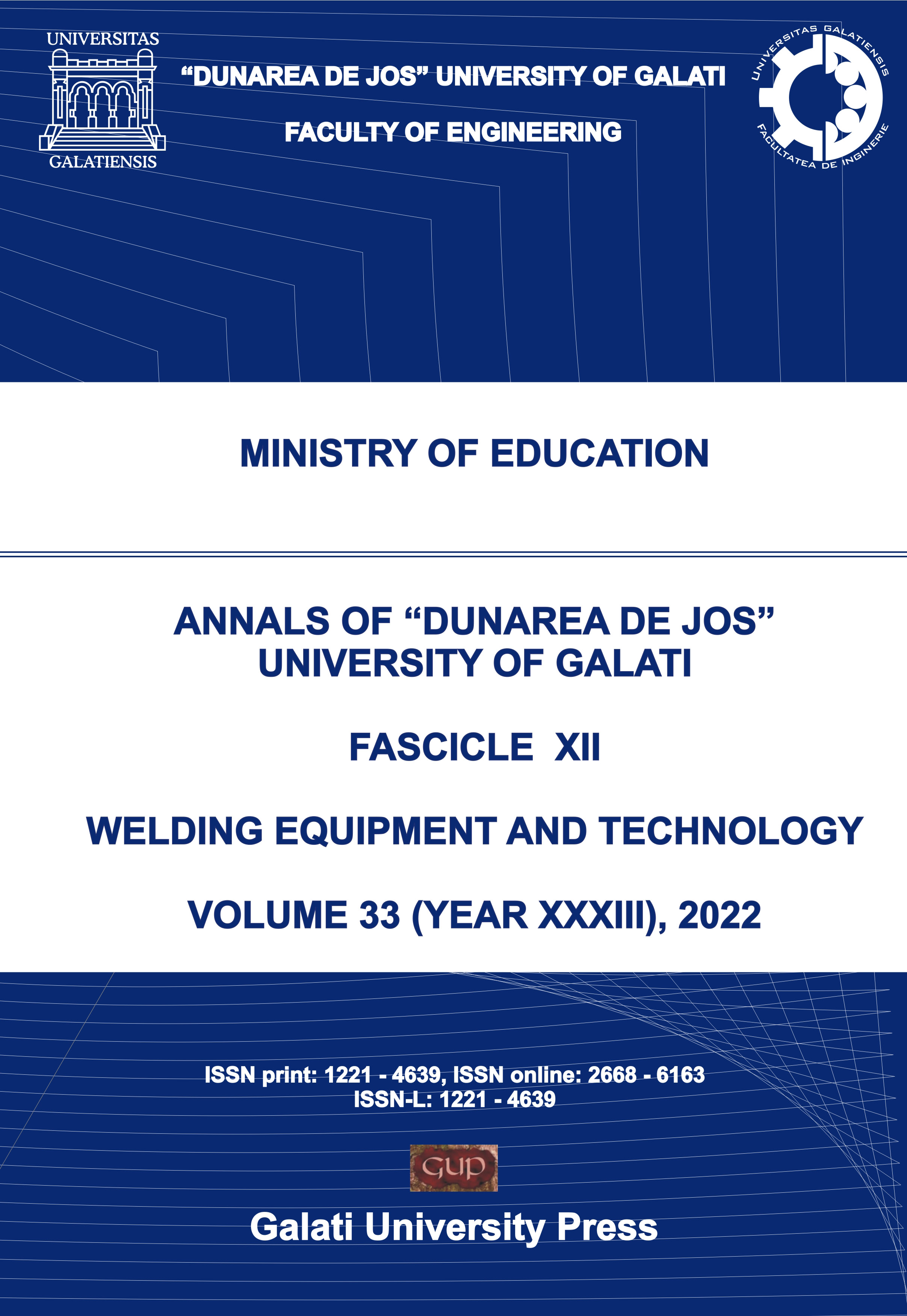Numerical Modelling of Thermo-Mechanical Effects Developed in Resistance Spot Welding of E304 Steel with Copper Interlayer
Abstract
Resistance spot welding is a joining technique of two metal plates, employing pressure and heat. This welding process uses the metals’ electrical resistance to generate the heat that is needed to form the joints from similar or dissimilar metals. In the specialized literature, there are studies for different types of welding processes on the influence of using an interlayer material in both similar and dissimilar joints. In most of the cases, when the parameter optimisation was performed the results lead to an increase in the joint’s strength. In this paper, it is studied the resistance spot welding of 1mm thick E304 stainless steel sheets with and without a copper foil interlayer, using the same welding parameters for both cases. The tensile test of the joints showed a decrease in the resistance of the ones with copper foil interlayer and so, for this combination of materials, optimization of the welding parameters was performed using finite element analysis.
Downloads
Papers accepted for publication become the copyrighted property of the Annals of "Dunarea de Jos" University of Galati, Fascicle XII, Welding Equipment and Technology. No part of the publication may be reproduced or transmitted in any form, or by any means, electronic or mechanical, including photocopy, recording, or any information storage and retrieval system, except in limited quantities for the non-commercial purposes of scientific or educational advancement, without permission in writing from the Editorial Board.


